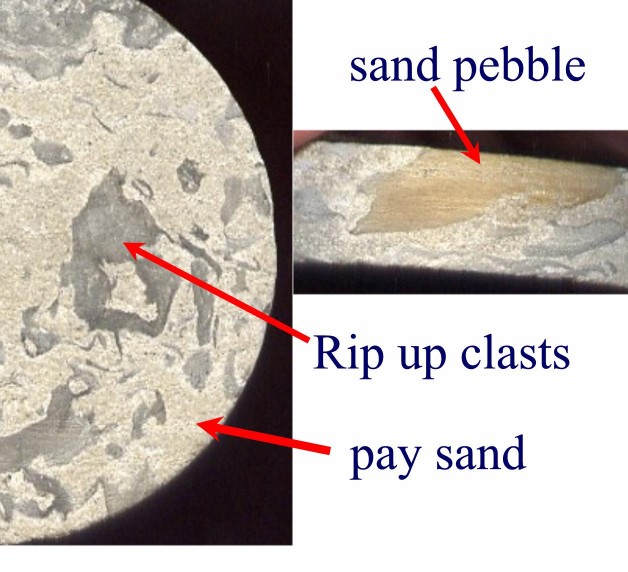Creation Science Articles
Oil Well Cores and the Global Flood
Copyright 2003 G.R. Morton. This can be freely distributed so long as no changes are made and no charges are made.
Since none of the young-earthers want to discuss my salt and the global flood article, perchance we can discuss evidence for lithification of rocks in the middle of the global flood and what those lithified rocks imply to the time frame over which the geologic column was deposited.
I used to work a field called Gini field in Fayette Co., Texas. It was named after a secretary in the company. The field had channel sands coming across it. The channels had rip-up clasts. These are parts of the river bank ripped up during times of flooding and deposited in the channel. We see this today in modern river environments. If the sediments forming the rip-up clasts were soft and unlithified, then they would fall apart into the tiny particles and be mixed in the sand sediment of the channel. In that case, we wouldn't see the clasts. But this core shows both clay and sand rip-up clasts, both of which had to be hard rock PRIOR to when they were incorporated into the channel sand. The picture below shows both the top and the edge of the core. The core is 4 inches in diameter and an inch thick and by this you can estimate the size of the pebbles.
The problem for global flood advocates is that when the channel was being deposited, it had to be on the surface of the sediment. And at that time, all sediment was soft and unlithified, having just been deposited by the global flood. So the question is, if the global flood was the cause of this channel sand, how did the lithification occur?
For general placement of the core in the geologic column, there is about 25,000 feet of total sediment in this area and this core was from 5400 feet deep. If the flood deposited all the sediment, then this was late in the flood and all dense and hard rocks eroded off the preflood landscape should have been deposited lower down. Also there is no outcrop of Precambrian rocks close to this site, so one can't easily claim preflood sedimentation (which probably was still soft at the time of the flood).

Did you know that you can be a Christian,
and believe that the earth is billions of years old? The
author of this article, Glenn Morton, made the transition from young
earth creationism to old earth creationism. To learn more
about old earth creationism, see
Old Earth Belief,
or check out the article
Can You Be A
Christian and Believe in an Old Earth?
Feel free to check out more of this website. Our goal is to
provide rebuttals to the bad science behind young earth creationism,
and honor God by properly presenting His creation.
